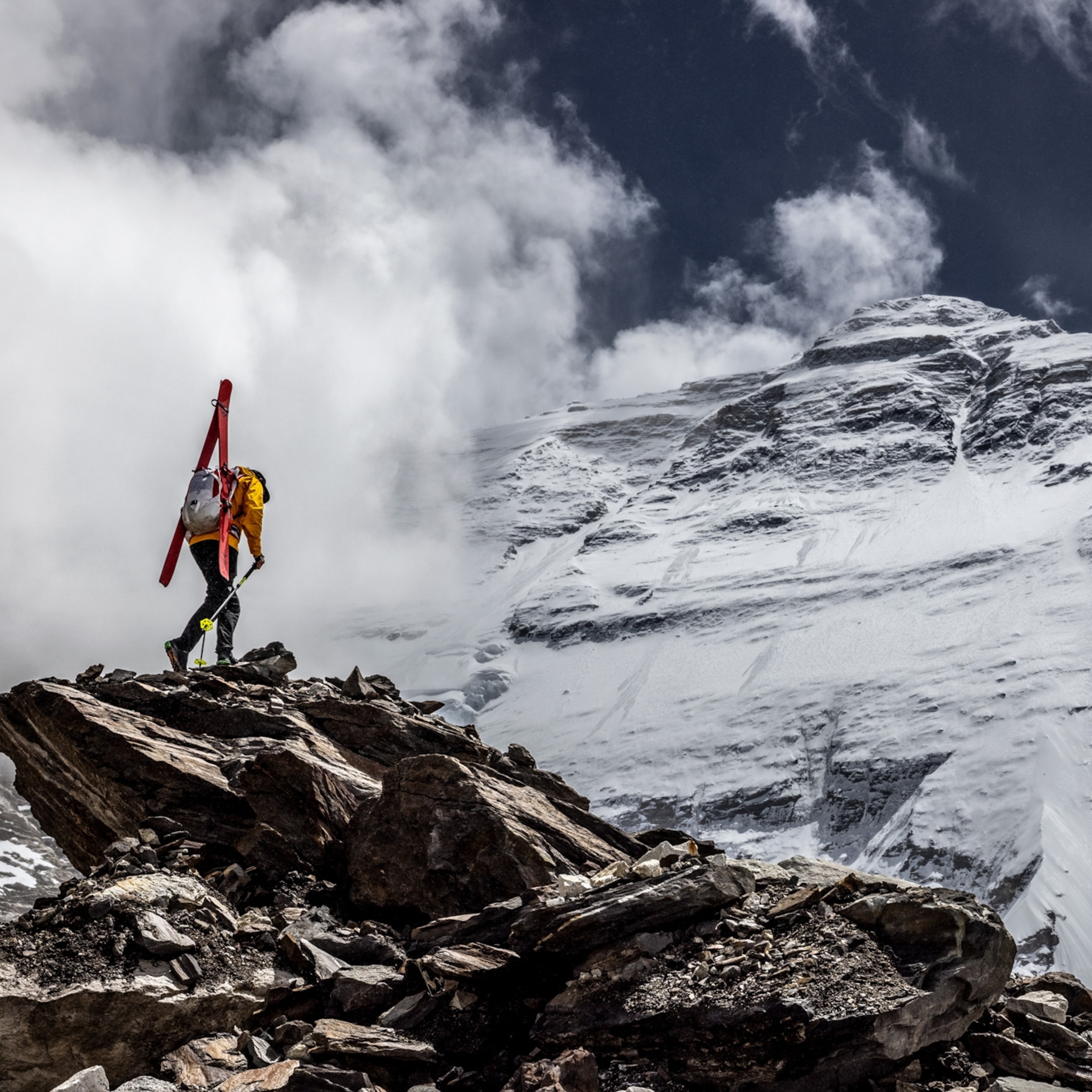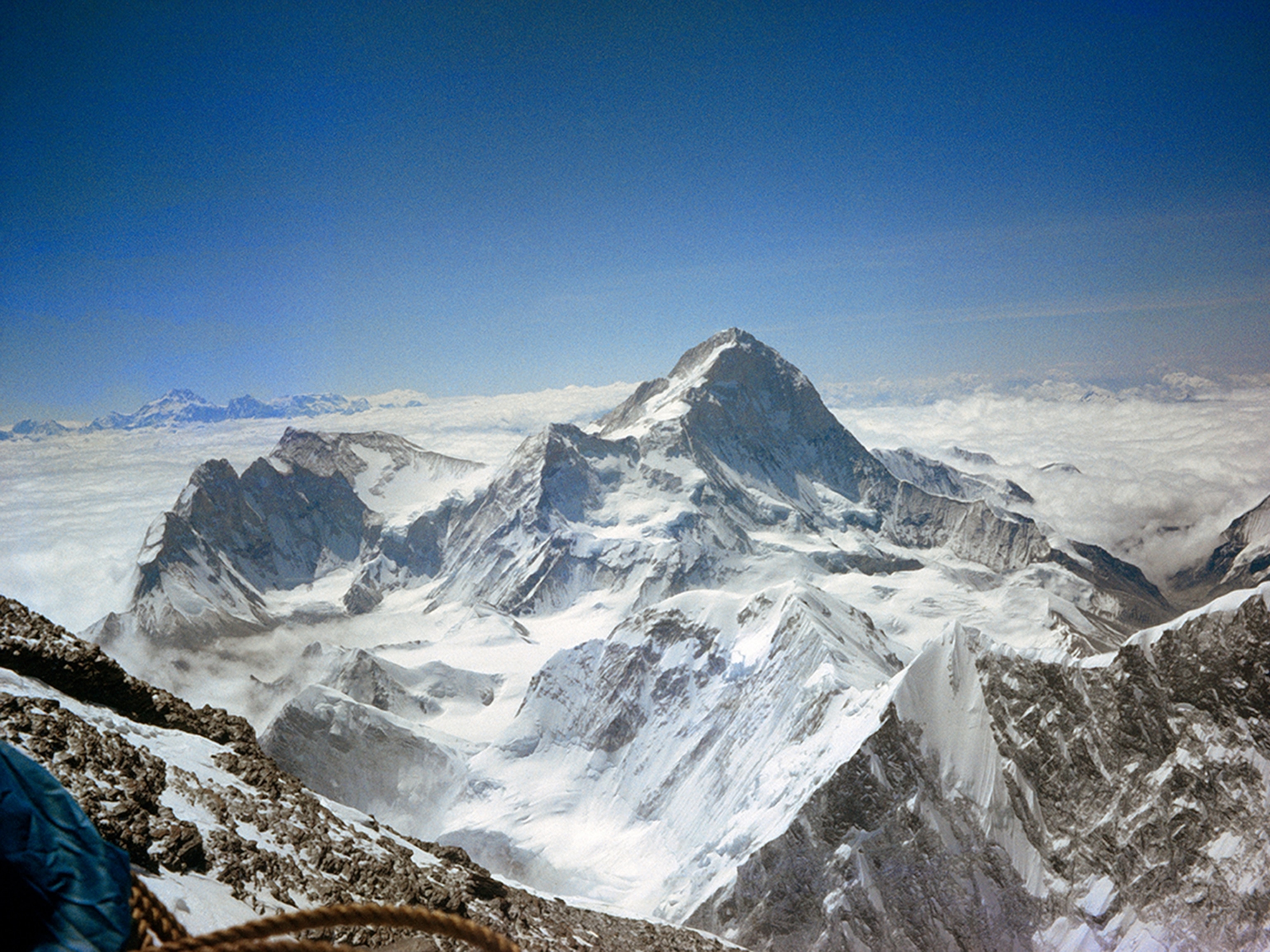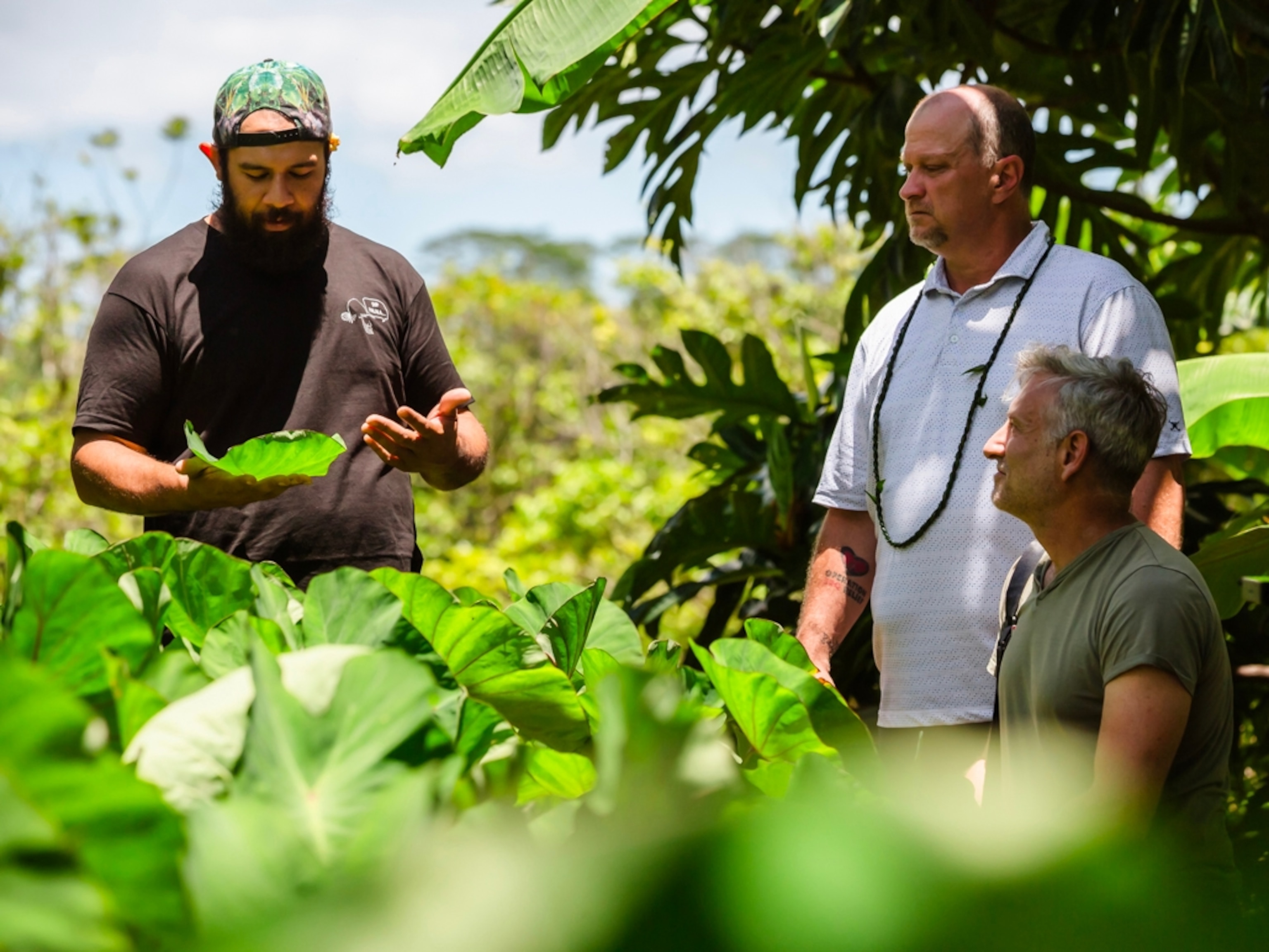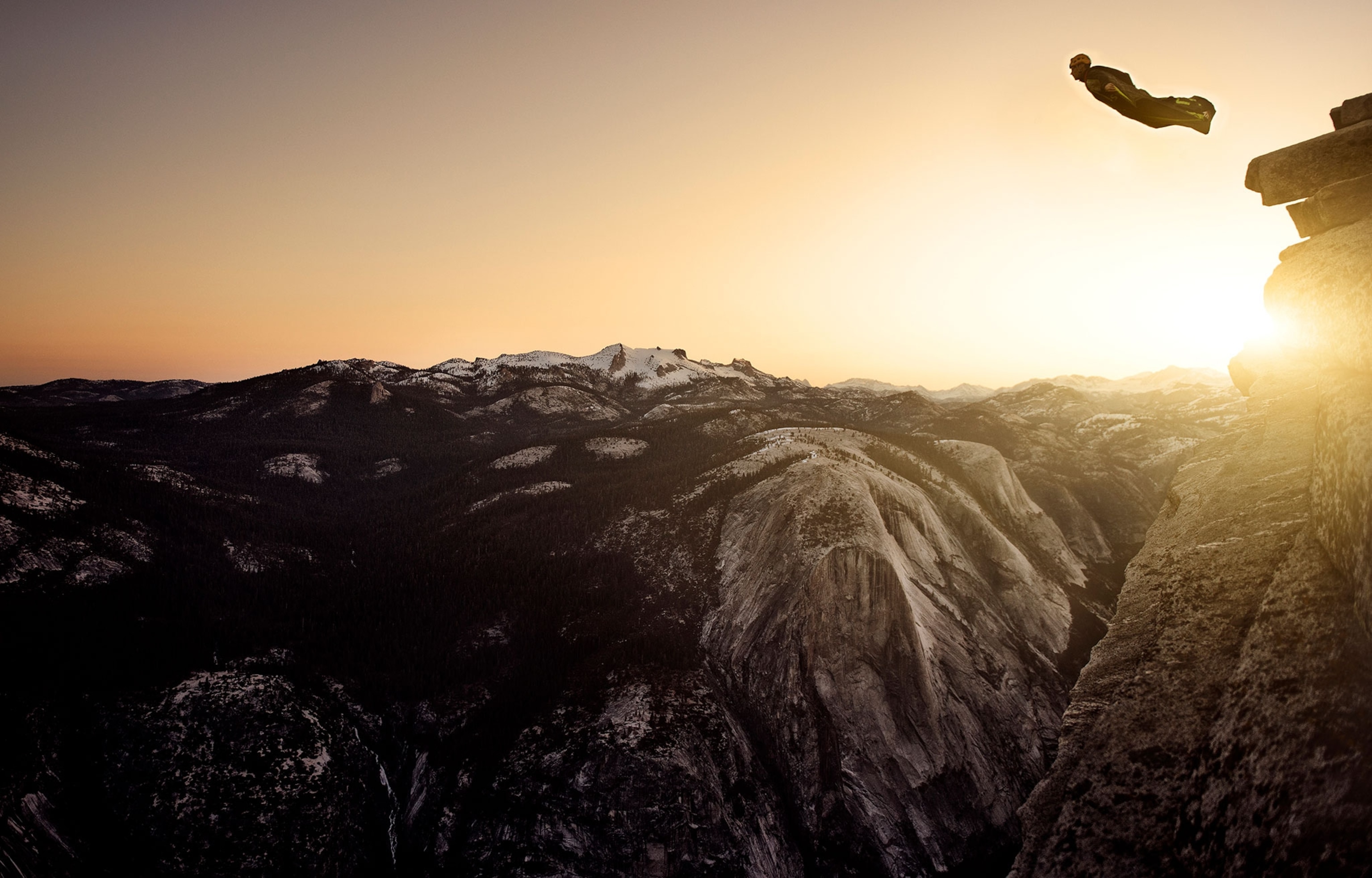
Has the world's deadliest sport become safer? It's complicated.
As wingsuit BASE jumping turns 20, some pilots are rethinking the risk.
Summertime in the European Alps is the so-called “killing season” for wingsuit BASE jumpers, who leap to their accidental deaths in adrenaline-fueled pursuits of human flight.
This summer, however, the world’s deadliest sport has claimed far fewer lives than past seasons. Just five wingsuit BASE jumpers have died so far in 2019. At this point in 2016, more than twice as many had lost their lives.
Our 2016 story, Why Are So Many BASE Jumpers Dying?, detailed what remains the sport’s single deadliest year, when at least 31 wingsuit BASE jumpers died, including one pilot who was killed while broadcasting his jump live on Facebook.
The number of wingsuit BASE jumping deaths have since gone down. In 2017, it dropped to just 15. 2018 saw an uptick to 23, still below 2016’s level. And this year, the 20th anniversary of the first ever wingsuit BASE jump, is on track to be the safest season in a generation.
So, what is happening? Are wingsuiters growing into their wings? Is the sport getting safer? Or have people simply decided to step back from the edge, leaving behind their dreams of human flight—and the high risk of early death?
Becoming the world's deadliest sport
The thing that makes wingsuit BASE jumping so appealing is also what makes it dangerous. The sport takes BASE jumping—where one jumps from a high point, freefalls, and deploys a parachute—and allows him or her to approximate flight. Wingsuit BASE jumpers, known as pilots, don full-body, aerodynamic outfits designed with baffled chambers that fill with air and create lift. Jumpers can glide forward at speeds upwards of 140 miles per hour, steering through the air with mind-boggling accuracy like a high-powered flying squirrel. The sport is primarily practiced in Europe, particularly Switzerland, Norway, France, and Italy, where tall cliffs are easily accessible and there are few regulations.
In an effort to heighten the sensations of speed and flight, wingsuit pilots favor "proximity flying"—soaring close to mountainsides, through ravines and forests, and just above the ground. And the closer you get to the terrain, the smaller the margins for error.
Viral YouTube clips of top wingsuiters carving through ravines, skimming the ground, and gliding to targeted landing sites from miles away made wingsuit BASE “the hottest thing going for the impressionable, 18- to 35-year-old single-male demographic,” Richard Webb, a former U.S. Navy fighter pilot and wingsuiter, said in 2016.
All those factors—the social media craze, impressionable population, easy access to jump points, and lack of regulations—likely played a role in the high number of wingsuiter deaths in 2016.
Stepping back from the edge
Perhaps most alarming in 2016 was the number of experienced wingsuit BASE jumpers who were killed. From 2015 to 2016, many of the sport’s biggest names and best athletes died, including Dean Potter, Jhonathan Florez, Dario Zanon, Uli Emanuele, and Alexander Polli.

“I just got sick of all the death,” said one American wingsuit pilot, who stopped jumping after 2016. He asked to not be named out of fear of being stigmatized within his community. “That year was a wake-up call that no one knew what they were doing.”
The fatalties included both highly experienced pilots and others who were disturbingly unqualified. Unlike other high-risk adventure sports, wingsuiting didn’t seem to attach safety to skill. In fact, it was almost the opposite: the more experience you had, the more flights you logged; the more confident you became, the more likely it seemed you were to die.
“I think wingsuit BASE jumping is a sport in decline,” says Laurent Frat, an American wingsuit pilot living in Chamonix, France. “It’s impossible to quantify, but it seems like there are less wingsuit BASE jumps being made in the Alps.”
Others disagree. Matt Gerdes, one of America’s most experienced wingsuit pilots and a co-designer at Squirrel, an American wingsuit manufacturer, disputes the claim that wingsuiters were affected by 2016’s carnage.
“The sport is growing. More people are coming into it every year and there is no reason to think that there are a fewer number of total jumpers or jumps completed,” says Gerdes, citing higher wingsuit sales.
He attributes 2017’s low fatality count to a far more banal reason.
“2017 was rainy,” Gerdes says simply. “Three weeks of widespread low pressure in the Alps can decrease the total number of jumps done in the busiest three months of the season by a significant margin.”
Training to save lives
Following the deadly 2016 season, the BASE-jumping community pushed for more education around the sport. According to some, many of the deaths were the result of people who “don’t know what they don’t know,” says Frat.
Frat has completed over 1,000 wingsuit BASE jumps. He and Gerdes are two of only a handful of wingsuit BASE-jumping instructors in the world. They teach for Next Level, a company that accepts only experienced students with the right attitudes.
“Our motivation was to slow these accidents down,” says Frat. “The sport is still in its infancy. There isn’t any central organization to take the reins. There aren’t any gatekeepers. You can stumble into some of the most difficult exit points (cliff ledges to jump off) on Earth and feel as if you’re capable enough to be there.”
Experts typically recommend a long and slow training path before attempting a wingsuit BASE jump, beginning with completing at least 200 skydives within 18 months and then flying a wingsuit while skydiving. You also need to be simultaneously learning traditional BASE jumping by completing hundreds of jumps of different heights and difficulties. This apprenticeship, if rigorously followed, would take several years and thousands of dollars.
No surprise, then, that it’s a path many believe can be cut short.
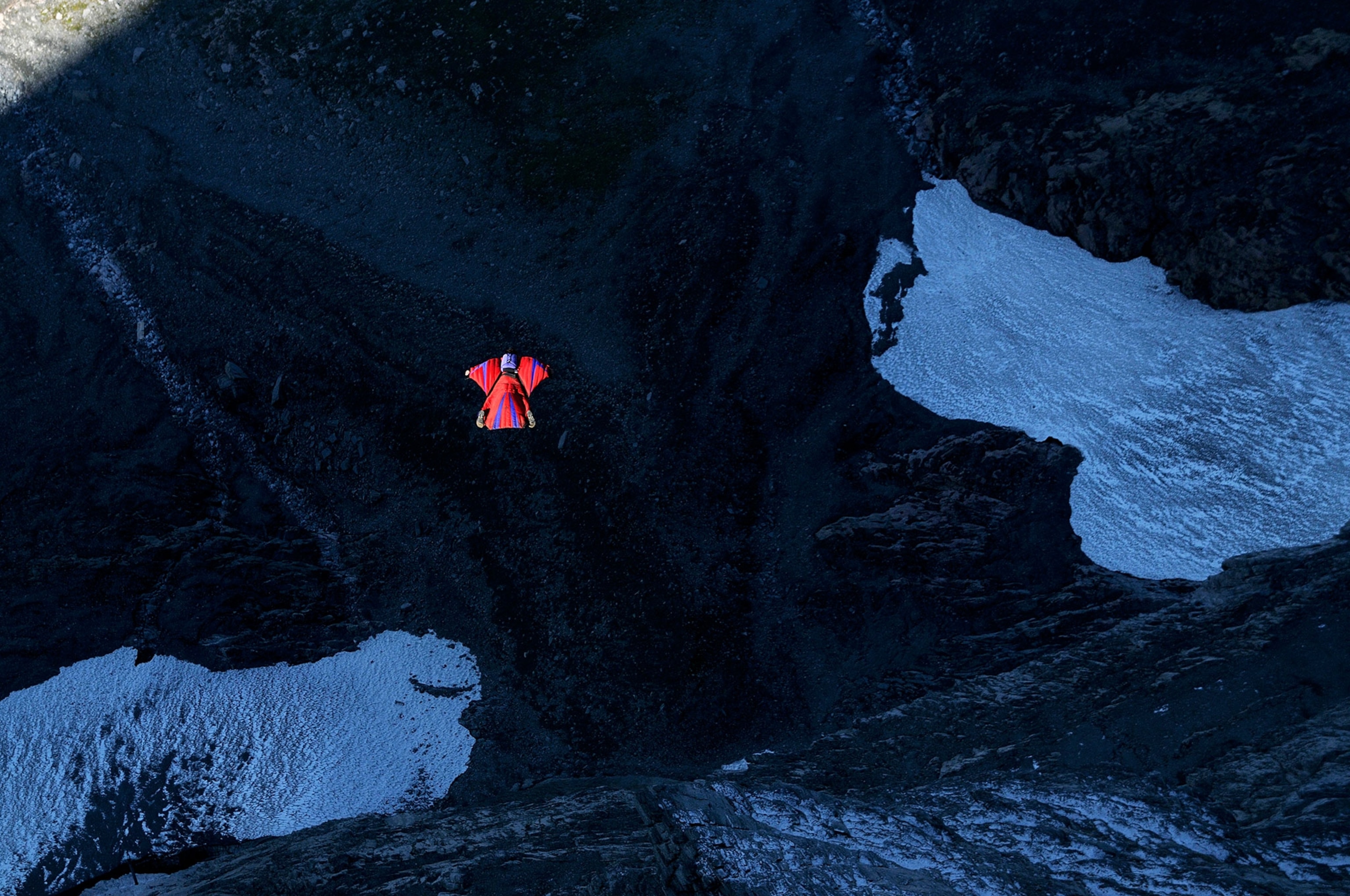
“The ideal wingsuit BASE jumper is someone who is very calculated and patient,” says Frat. “You have to be crazy to want to jump off a cliff, but you have to have enough logic-based decision-making skills to survive. This is a rare personality.”
Despite the increase in educational opportunities, a wingsuiting “classroom” is far from a safe space. The most recent wingsuit fatality was a 51-year-old American student taking a course with the company Learn to BASE Jump. On July 30, 2019, Jon Malmberg, an experienced paraglider with 140 BASE jumps and 300 skydives, died in Lauterbrunnen, Switzerland, when he was too slow to pull his pilot chute, a small parachute that pulls out the main parachute and initiates the deployment process.
Ironically, Malmberg was using new technology that many say could save lives—a one-piece "tracking" wingsuit with less fabric between the arms and improved aerodynamics. The hope is that the increased mobility of the one-piece suits will reduce deaths from slow parachute pulls, the exact thing that killed Malmberg.
Better gear, however, can't compensate for inexperience and the jump in Lauterbrunnen, according to a few experienced wingsuiters, may have simply been too difficult for Malmberg's skill level.
Reversing the trend
Although Gerdes maintains that the sport is growing, internet data seems to show that wingsuit BASE jumping isn’t as trendy as it once was.
Google Trends, a tool that analyzes Google search inquiries, shows interest in wingsuit BASE jumping reached peak levels in May 2015, the month Dean Potter and Graham Hunt died together during an illegal wingsuit jump in Yosemite National Park. Since then, the search term has been steadily declining and is now at its lowest levels in almost a decade.
GoPro, manufacturer of helmet-mounted action cameras and creator of an adventure-sport Youtube channel, has also been posting far fewer clips of proximity wingsuit flights. In fact, the company has only posted one such video in the past year, compared to the nearly a dozen they shared around that deadly era of 2015-2016. Their most recent video, of celebrity wingsuit pilot Jeb Corliss, has only 230,000 views. The video of Uli Emmanuele flying through a hole in a rock, which he shot about two months before he died on August 17, 2016, has 10 million views.
“I think that the YouTube generation of wingsuit basically maxed out a bit and people haven’t been able to do much more than has already been seen online,” says Andy Lewis, a BASE jumper from Moab, Utah. “Takes a lot more to wow the internet now.”
“I tell that to my students, ‘You don’t want to become a YouTube hit,’” says Frat. “It was new and exciting to see (point-of-view) footage of flying down a mountainside, and that novelty has worn off. The hangover of people dying has set in. And now it’s, ‘Where do we go from here?’”
Can more regulations help?
On July 18, 2019, a Polish BASE jumper with over 400 wingsuit BASE jumps died in Sunndal, Norway. He was alone and appeared to have fallen off the cliff before he was fully suited up. A rescue helicopter was deployed to find his body.
Sunndal mayor Ståle Refstie says he supports the rights of BASE jumpers in general, but he wouldn’t reject a ban if needed. “I am not for a general ban on BASE jumping,” he says, admitting it would be difficult to enforce. But, “according to Norwegian law, BASE jumping might be banned in areas where frequent rescue operations become dangerous to the personnel involved.” If the local police and rescue personnel requested a ban, he says he would support it.
It wouldn’t be the first ban in Norway. All BASE jumping is forbidden on Norway’s biggest cliff, the 3,600-foot-tall Trollveggen. It was there, in 1984, that Carl Boenish, the "father" of BASE jumping, set the world record with his wife, Jean Boenish, for the highest BASE jump in history. Hours later, he died on a jump in the same range. By 1986, following several more fatalities, the cliff was closed to BASE jumpers.

In the United States, BASE jumping is banned at all national parks but is allowed in Bureau of Land Management and U.S. Forest Service spaces. Jumpers are also allowed to exit off the Perrine Bridge in Twin Falls, Idaho, and, once a year, off the New River Gorge Bridge in Fayetteville, West Virginia.
There’s a ban in the town of Chamonix, France, as well, where the mayor passed a temporary regulation after the death of a 32-year-old Russian wingsuiter who crashed into an empty chalet.
The ban, intended to protect the public from the threat of human projectiles, was only supposed to last six months. Nearly three years later, it has continued. The BASE jumping community, which lacks a formal advocacy organization, continues to wrestle with providing assurances of self-regulation.
Still, BASE jumpers have made progress. Laurent Frat and other French BASE jumpers have had several meetings with the mayor and other regional officials, and Frat says he is optimistic that with tighter regulations to ensure nobody is crashing into town, wingsuiting will return to the Augille du Midi in the fall, though it will remained closed on the Brevent side.
Frat is optimistic that wingsuit BASE jumping has the potential to follow in the footsteps of paragliding, which was also at one point banned in Chamonix. As gear improved and governing organizations helped with self-regulation, paragliding returned to the skies of Chamonix.
“Now, paragliding has become almost a family sport in the valley,” says Frat.

